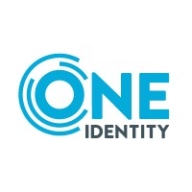![Hitachi ID Privileged Access Manager [EOL] Logo](https://images.peerspot.com/image/upload/c_scale,dpr_3.0,f_auto,q_100,w_64/oz2tnjdteedru28f6d6m695iggdh.jpeg)

Find out what your peers are saying about CyberArk, Delinea, WALLIX and others in Privileged Access Management (PAM).

| Company Size | Count |
|---|---|
| Small Business | 18 |
| Midsize Enterprise | 12 |
| Large Enterprise | 19 |
Hitachi ID Privileged Access Manager secures access to elevated privileges. It eliminates shared and static passwords to privileged accounts. It enforces strong authentication and reliable authorization prior to granting access. User access is logged, creating strong accountability.
Privileged Access Manager secures access at scale, supporting over a million password changes daily and access by thousands of authorized users. It is designed for reliability, to ensure continuous access to shared accounts and security groups, even in the event of a site-wide disaster.
Privileged Access Manager grants access to authorized users, applications and services. It can integrate with every client, server, hypervisor, guest OS, database and application, on-premise or in the cloud.
One Identity Safeguard manages and monitors privileged access, enhancing security with features like automatic session recording, real-time monitoring, and credential rotation. It integrates seamlessly, supports compliance with audit trails, and improves operational efficiency across organizations. This robust platform significantly bolsters security protocols while controlling sensitive operations.
We monitor all Privileged Access Management (PAM) reviews to prevent fraudulent reviews and keep review quality high. We do not post reviews by company employees or direct competitors. We validate each review for authenticity via cross-reference with LinkedIn, and personal follow-up with the reviewer when necessary.